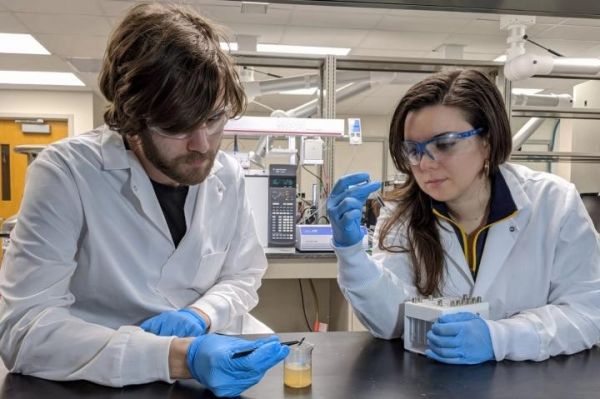Before water produced during hydraulic fracturing is disposed of in waterways or reused in agriculture and other industries, chemists at The University of Toledo are zeroing in on water quality and environmental concerns of fracking wastewater to determine if it is safe for reuse.
The research scientists of the new Dr. Nina McClelland Laboratory for Water Chemistry and Environmental Analysis at UToledo created a new method that simultaneously identified 201 chemical compounds in fracking wastewater, called produced water.
The research, which is published in the Journal of Separation Science and was carried out in collaboration with scientists at the University of Texas at Arlington, shows that many of the chemicals found in produced water are carcinogens, solvents and petroleum distillates that can directly contaminate drinking water sources.
“The issue with produced water is that this is a very new and overlooked source of pollution, and disposal and purification practices are not yet fully optimized to guarantee total removal of environmental pollutants,” said Dr. Emanuela Gionfriddo, assistant professor of analytical chemistry in the UToledo Department of Chemistry and Biochemistry, and the School of Green Chemistry and Engineering. “Our work aimed to provide a new, simple and cost-effective method for the comprehensive characterization of chemicals and fill the gap of knowledge currently existing about the chemical composition of this waste product of the oil and natural gas industry.”
Read more at University of Toledo
Image: Dr. Emanuela Gionfriddo, assistant professor of analytical chemistry in The University of Toledo Department of Chemistry and Biochemistry and the School of Green Chemistry and Engineering, right, and Ronald Emmons, UToledo Ph.D. candidate, left. (Credit: Daniel Miller, The University of Toledo)


